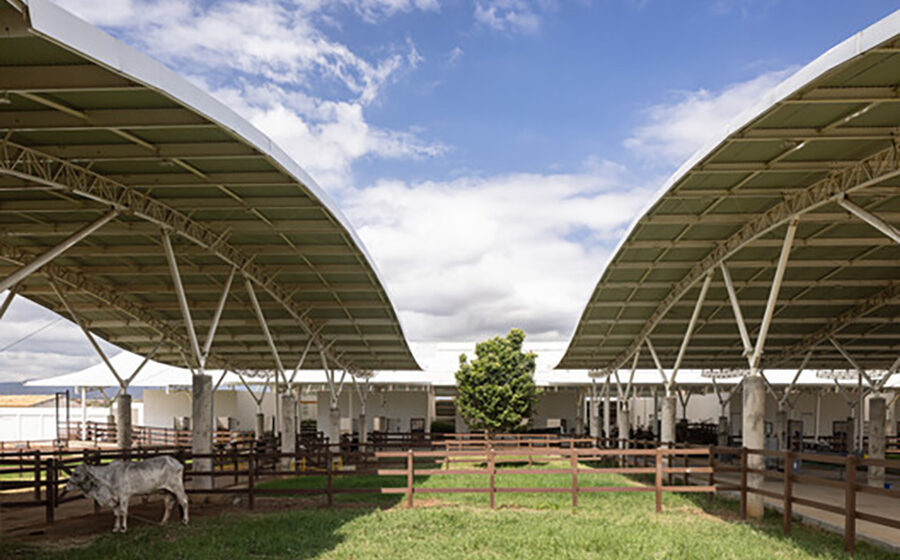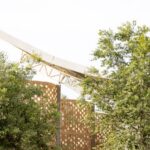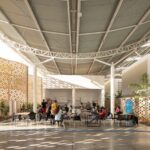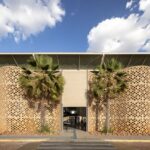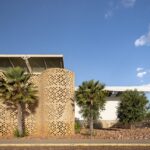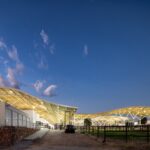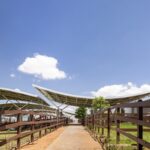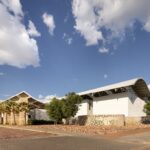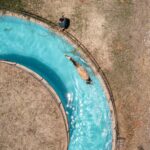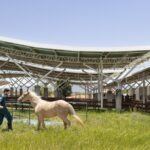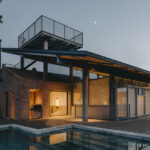The Veterinary School Hospital in Juazeiro do Norte, part of Unileão, serves as a vital educational and practical facility for students under the guidance of instructors. Designed to cater to both small and large animals, the hospital encompasses various areas including kennels, catteries, stables, paddocks, consultation rooms, laboratories, surgical centers, classrooms, and administrative sections. The architectural approach revolves around providing ample shade for thermal comfort, a critical consideration in the region’s semi-arid climate.
Thermal Comfort and Shelter: Innovative Roof Design
A defining feature of the hospital’s design is a large detached roof that provides extensive shade to the entire building. This roof, supported by metal trusses, features a curved shape resembling waves with interruptions to allow hot air to escape. Translucent polycarbonate tiles are incorporated in some areas to harness natural light effectively. The expansive shade not only covers the building but also extends over the paddocks and areas for large animal internment, ensuring comfort for both patients and staff.
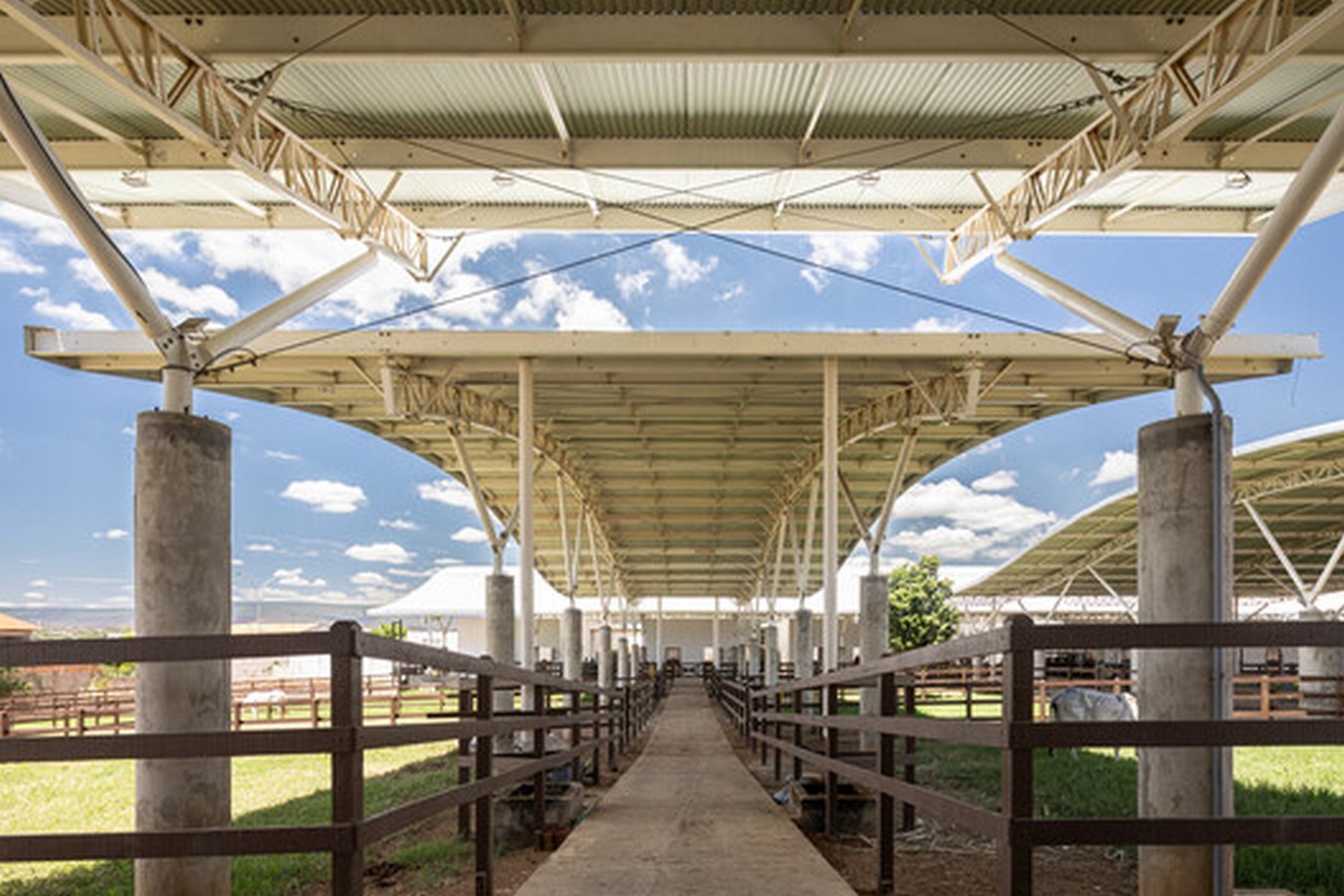
Terrain Modification and Building Placement: Enhancing Microclimate
The sloping terrain is strategically modified to create two platforms with a height difference, accommodating the various hospital buildings. The separation of activities into six distinct blocks allows for adequate spacing, facilitating cross ventilation and contributing to a pleasant microclimate. Vertical and staggered windows introduce dynamism to the facades while promoting airflow and natural light penetration.
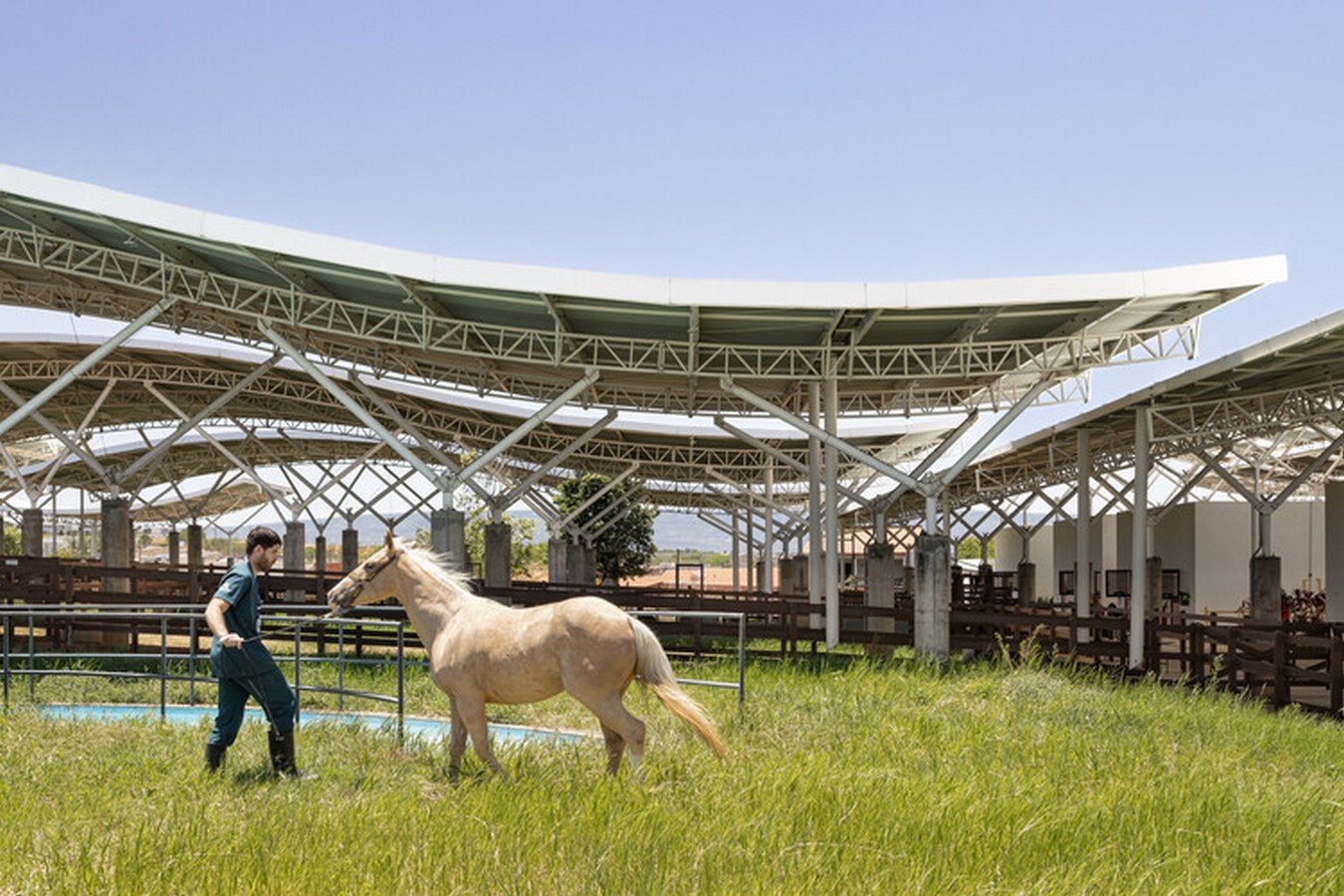
Solar Protection and Bioclimatic Strategies: Minimizing Heat Effects
To mitigate the intense sunlight in the region, a towering solar protection structure made of solid ceramic bricks is erected. This lattice-like element, seven meters high, filters sunlight and shields the interior spaces from excessive heat. The serpentine shape of the masonry serves not only as solar protection but also as a visual and functional separator between public and private areas within the hospital. Overall, the building is designed to serve as an oasis in the desert landscape, employing passive bioclimatic strategies to combat the challenges of the semi-arid climate and create inviting and comfortable environments for the hospital’s activities.

